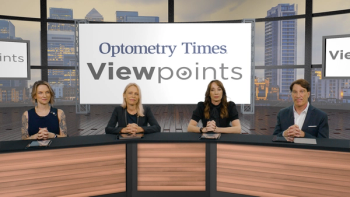
AAOpt 2024: Simplifying genetic testing
Mohammad Rafieetary, OD, FAAO, FORS, Dipl ABO, ABCMO, details the ease of genetic testing when diagnosing patients or reassessing a patient's diagnosis.
Mohammad Rafieetary, OD, FAAO, FORS, Dipl ABO, ABCMO, discusses one of his presentations, "Suprachoroidal Delivery of Investigational ABBV-RGX-314 Gene Therapy for Diabetic Retinopathy: The Phase II ALTITUDE Study," which he gave alongside Roya Attar, OD, MBA, DHA at the AAOpt 2024 conference.
Video transcript:
Editor's note: The below transcript has been lightly edited for clarity.
Mohammad Rafieetary, OD, FAAO, FORS, Dipl ABO, ABCMO:
Hello everybody. This is Mohammad Rafieetary. I'm an optometrist at the Charles Retina Institute in the Tennessee, Arkansas, Mississippi area. I had a second presentation on inherited retinal disorders and why genetic testing is important. And I was accompanied by a colleague, Dr Roya Attar. She's at the University of Mississippi Medical Center, Department of Ophthalmology in Jackson, Mississippi. We talked about genetic variation. We talked about particularly epigenetic variation. You know, if you think about a condition, for instance, macular degeneration, that's not a Mendelian disease, but has a genetic component to it. Why do we talk about smoking? Because smoking affects the epigenetics. These are situations where your DNA changes without your DNA sequence chang[ing], and you affect the body's behavior, your protein productions, your normal cell function by either what you inherited from your relatives or by what you're doing to your own. So I went through a number of cases. [Attar] described a lot number of situations as to, why is it to do genetic testing. You know, we have all sorts of imaging. We have functional testing, we have electrodiagnostic, we do laboratory testing for patients who are at risk for infectious disease. Yet, we have another thing, genetic testing, when things don't make sense.
I showed a case, for instance, that the patient, for a number of years, was diagnosed with retinitis pigmentosa, but she had also been on Plaquenil for a number of years. When I did genetic testing on her, she had no genetic predisposition or variation for retinitis pigmentosa. So her retinal findings were associated with retinal toxicity from hydroxychloroquine. So again, we now have an easier way to do genetic testing by a simple cheek swab and filling out some forms and sending it to laboratories where they can give us results, and we look at those results. Does this make sense? Does the clinical presentation, history of this patient, all the testing we do and this other data, do they all go together to make the correct diagnosis?
Newsletter
Want more insights like this? Subscribe to Optometry Times and get clinical pearls and practice tips delivered straight to your inbox.








































